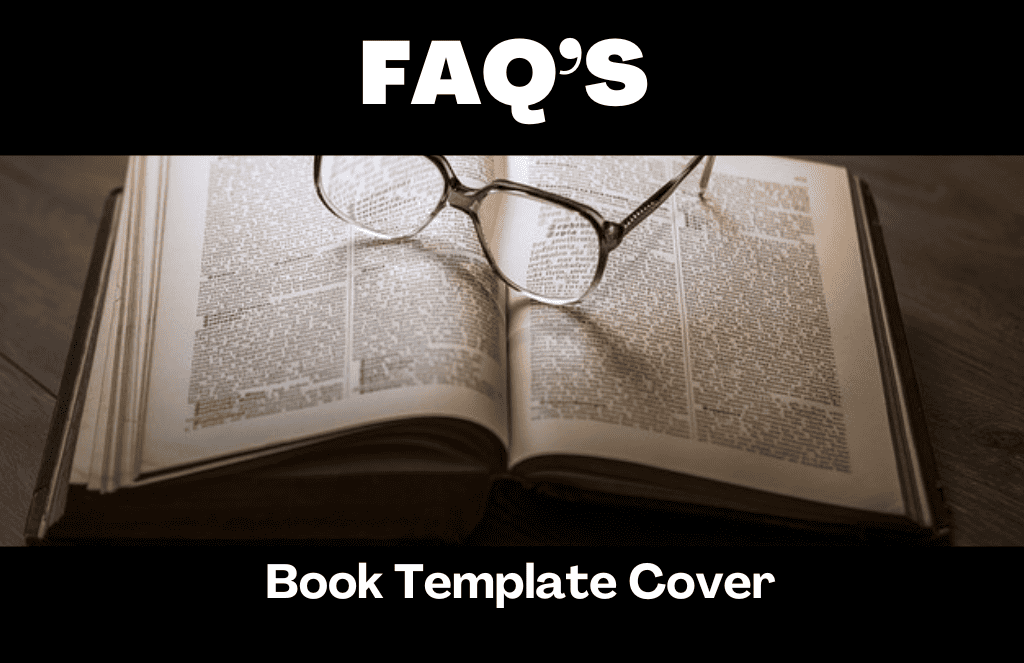Book Template Cover

Book Template Cover: Simplify and Elevate Your Book Design
A book template cover is a concise, eye-catching design that showcases the title and author of a book, capturing the essence of its content and attracting potential readers. It serves as a visual representation of the book’s theme and style, playing a crucial role in grabbing attention and generating interest.
The cover design should be unique, memorable, and aligned with the genre and target audience of the book. An effective book template cover is one that effectively communicates the book’s essence, enticing readers to pick it up and delve into its pages.
In today’s competitive publishing landscape, a well-designed book cover can make all the difference in capturing the interest of potential readers. As the saying goes, “Don’t judge a book by its cover” — well, in reality, people do.
A visually appealing and professionally designed book cover can greatly enhance the chances of a book’s success by catching the eye of the browsing reader, conveying the book’s genre and style, and ultimately enticing the reader to delve into its pages.
Therefore, when creating a book template cover, it is vital to consider the target audience, genre, and overall theme of the book to ensure the cover resonates with potential readers and effectively promotes the content within.
How to Choose The Right Book Template Cover?
When it comes to designing the cover for your book, choosing the right template is crucial. The cover is the first thing readers see, and it should not only grab their attention but also convey the essence of your book.
Your Book’s Genre And Target Audience
Understanding your book’s genre and target audience is a crucial step in choosing the right book template cover. Your cover should appeal to your target readers and give them a sense of what to expect from your book. Without understanding your genre and audience, it’s like shooting in the dark.
First, consider your book’s genre. Is it a romance, mystery, self-help, or fantasy novel? Each genre has its own visual cues that can help you narrow down the options. For example, romance novels often feature couples in embrace or close-ups of a woman.
Mysteries tend to have intriguing imagery or clues. Self-help books often have motivational images or symbols related to personal growth.
Next, think about your target audience. Are you writing for young adults, middle-aged professionals, or children? Understanding your audience’s preferences and expectations will help you select a cover that resonates with them.
For instance, if your target audience is young adults, you might opt for a modern and edgy design. On the other hand, if your book is for children, you may want bright colors and playful illustrations.
Evaluating Different Book Template Cover Options
Now that you have a clear understanding of your book’s genre and target audience, it’s time to evaluate different book template cover options. There are a myriad of book templates available, each with its own style and visual elements.
To make the evaluation process easier, create a checklist of criteria that are important to you. Consider aspects such as layout, typography, color scheme, and imagery. Look for templates that align with your genre and audience, while also capturing the essence of your book.
Listed below are some factors to consider while evaluating book template covers:
- Layout: Does the layout convey the mood and genre of your book effectively?
- Typography: Is the font style and size appropriate for your genre? Does it enhance readability?
- Color Scheme: Do the colors used in the template evoke the right emotions and reflect the tone of your book?
- Imagery: Does the template offer the option to add relevant images or illustrations? Are they consistent with your book’s theme?
Remember, the template you choose can be customized later, so don’t worry if it’s not a perfect fit right away. Aim for a template that captures the overall vibe and resonates with your genre and audience.
Customizing The Chosen Template To Fit Your Book’s Theme
Once you’ve selected a book template cover that aligns with your book’s genre and target audience, it’s time to customize it to fit your book’s theme. Customization allows you to add a personal touch and make the cover truly unique.
When customizing the template, consider the following:
Background: Choose a background color or image that complements your book’s theme and sets the right mood.
Title and Author Name: Experiment with different fonts, sizes, and placements to make the title and author name stand out while maintaining readability.
Images/Illustrations: Add relevant images or illustrations that capture the essence of your story or convey important elements.
In conclusion, choosing the right book template cover requires understanding your book’s genre and target audience, evaluating different options, and customizing the chosen template to fit your book’s theme.
Steps To Simplify And Elevate Your Book Design

Creating a captivating and visually appealing book design is essential to attract readers and make a lasting impression.
Crafting A Compelling Title And Subtitle
A well-crafted title and subtitle are crucial elements that can instantly grab the attention of potential readers. Keep these tips in mind when creating your book’s title and subtitle:
- Compose a concise and catchy title that accurately reflects the main theme or message of your book.
- Ensure your subtitle complements the title by providing additional context or a unique selling point.
- Use powerful and descriptive words that evoke curiosity and create intrigue.
Selecting Captivating Imagery Or Illustrations
The right imagery or illustrations can enhance your book’s design and engage readers visually. Here’s how to choose captivating visuals:
- Select images or illustrations that effectively represent the essence of your book.
- Ensure the visuals are high-resolution and visually appealing.
- Consider the emotional impact of the visuals and how they align with your book’s genre and tone.
Applying Typography And Color Schemes Strategically
The strategic use of typography and color schemes can greatly influence the visual impact of your book design. Follow these tips for effective implementation:
Choose fonts that are legible and suitable for your book’s genre and theme.
Consider the overall color scheme of your book cover and ensure it conveys the desired mood or message.
Use contrasting colors to make important elements, such as the title, stand out.
3.4 Incorporating Branding Elements Into The Design
Integrating branding elements into your book design helps establish a cohesive and professional look. Take these steps to incorporate branding effectively:
Include your personal or author logo in a subtle yet prominent position.
Apply consistent fonts, colors, and graphic styles that align with your overall branding strategy.
Ensure the design reflects your author brand and resonates with your target audience.
3.5 Seeking Feedback And Making Necessary Revisions
Receiving feedback and making revisions are critical steps in refining your book design. Follow these suggestions for a successful review process:
- Share your book cover with trusted friends, colleagues, or beta readers.
- Collect honest feedback and consider suggestions for improvement.
- Make necessary revisions to enhance the overall impact and effectiveness of your book design.
Frequently Asked Questions On Book Template Cover

What Are The Key Elements Of A Book Cover Template?
A book cover template should include the title, author name, compelling artwork, and a captivating tagline that reflects the book’s theme.
How Can I Customize A Book Cover Template To Match My Book’s Genre?
You can customize a book cover template by selecting appropriate colors, fonts, images, and graphics that align with your book’s genre, whether it’s romance, thriller, fantasy, or any other genre.
Where Can I Find Book Cover Template Designs?
You can find book cover template designs on various websites, such as Canva, Adobe Spark, or through graphic design platforms like Fiverr or 99designs. You can also hire a professional designer to create a customized book cover template.
Conclusion
A well-designed book cover template is essential for catching the attention of potential readers and making a lasting impression. By following the guidelines provided, you can create a visually appealing and professional-looking cover that effectively represents your book’s content. Remember to prioritize simplicity, readability, and relevance when choosing fonts, colors, and images.
With a thoughtfully designed cover, you can greatly increase the chances of attracting the right audience and driving sales. So, get creative and start designing your perfect book cover today!
Share